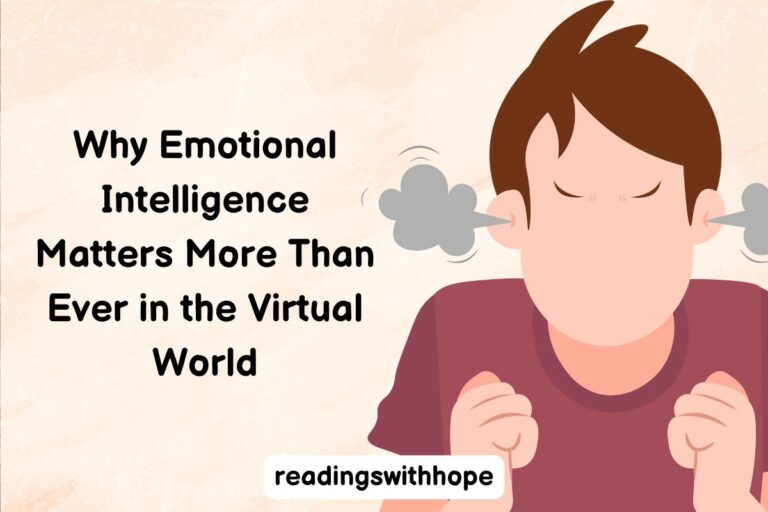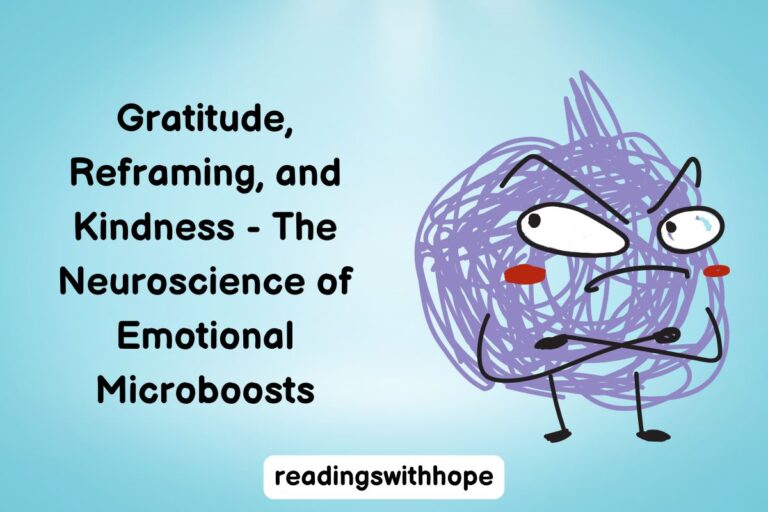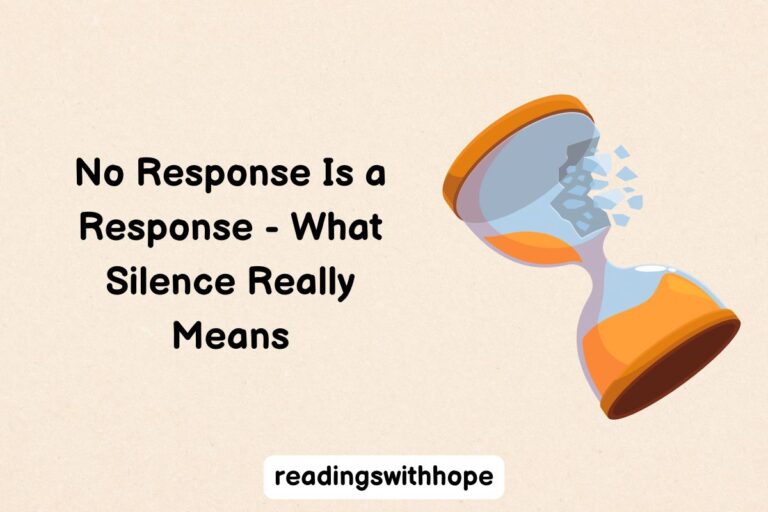Building Emotional Fitness – A 30-Day Micro-Habit Challenge
We already know emotional fitness is crucial—it’s the engine behind resilience, performance, connection, and even creativity.
But here’s the thing that often gets underestimated: you can’t brute-force your way into joy. Emotional well-being isn’t just a mindset shift or a weekend workshop—it’s a skill. And like any skill, it needs reps.
That’s why I’m obsessed with micro-habits.
They’re tiny, repeatable, and sneakily powerful. You’ve probably used them in behavior change models already (BJ Fogg, anyone?), but emotional fitness is where they shine brightest. The Big Joy Project proved this.
People across 100+ countries, many juggling real stress and limited time, reported increased happiness by doing small, 5-minute emotional practices for just a week. What if we didn’t stop at 7 days?
So this 30-day framework?
It’s not just a longer to-do list. It’s a scaffold for rewiring emotional patterns, slowly and sustainably. We’re not just chasing joy—we’re engineering it.
How the challenge actually works
Let me walk you through the foundation before we geek out on the daily tasks. Because if you’re like me, you want to know: why should I trust this model? What makes it better than the 17 other well-being challenges out there?
The science behind small
If you’ve read Fogg’s Tiny Habits or Wood’s work on automaticity, you already know that the smaller the habit, the more likely it sticks—especially under stress.
Big Joy took that principle and applied it to emotional interventions: gratitude journaling, acts of kindness, savoring awe, and meaning-making. What shocked me wasn’t the types of practices (we’ve seen those)—it was how little time was required to produce measurable change.
We’re talking 5–7 minutes. Not because it’s trendy, but because that’s the threshold where the brain stops resisting and starts encoding. Think of it like cognitive HIIT: high impact, low duration, high compliance.
And when you do that for 30 days?
You’re not just building habits—you’re installing a new emotional default.
Weekly themes, not random acts
The 30-day challenge is split into four weeks, each with its own emotional theme. There’s a deliberate arc here. We start with Joy & Gratitude (low lift, high payoff), then move into Connection, then Agency, and finish with Integration.
This isn’t arbitrary. In fact, it mimics both therapeutic sequencing (build safety first, then deeper processing) and cognitive-behavioral layering. Each week deepens the neuro-emotional groove laid down by the one before it.
Let’s look at a few examples to see what this looks like in action.
Week 1 – Joy & Gratitude
The goal here is to spark upward spirals. Think Barbara Fredrickson’s broaden-and-build theory: joy expands cognitive bandwidth, which helps us spot more opportunities for meaning and action.
Some practices from this week:
- Write one thing you’re grateful for, but with detail. Not “my dog,” but “the way she rested her head on my knee when I felt off this morning.”
- Celebrate someone else’s win. Not just silently—send them a message, amplify their moment.
- Notice awe. This could be a podcast, a tree, a piece of music that makes you go “whoa.” Awe has this uncanny ability to shrink our ego and elevate our perspective.
These aren’t just feel-good moments. They’re tools for expanding perception, regulating stress, and rewiring default attention away from threat cues.
Week 2 – Connection & Expression
Now we move to social and emotional openness. Why now? Because in week one, we built a base of psychological safety—so we’re ready to reach out.
Key micro-habits:
- Send a heartfelt note. Nothing huge—just “Hey, I thought of you when I read this.” That kind of thing lingers.
- Offer a compliment—but make it specific and earned. “I always admire how calm you stay during hard meetings” hits different than “you’re awesome.”
- Name an emotion aloud. Not just “I feel bad,” but “I’m frustrated because I didn’t feel heard.” Emotional granularity strengthens regulation, especially in high performers.
Connection is not a soft skill here. It’s a performance lever. People who feel seen and who express clearly perform better, collaborate deeper, and bounce back faster.
Week 3 – Agency & Reframing
This week hits harder—it’s about turning inward, spotting stuck narratives, and shifting them. We invite people to notice the voice in their head and actually talk back.
Examples:
- Identify one limiting belief and reframe it. “I’m not good at this” becomes “I’m still learning this.”
- Affirm a personal strength—especially one that’s been overlooked.
- Set a micro-goal. Not “fix my life,” but “reach out to that one person I’ve been avoiding.”
Agency isn’t just about action—it’s about reclaiming authorship. This week is where participants start to feel like they’re not passengers anymore. The challenge becomes theirs.
Week 4 – Integration & Meaning
Final week. Time to connect the dots. We go meta—not just “what did I do today,” but “what did I learn about myself this month?”
Habits include:
- Repeat a favorite micro-act. Build depth, not novelty.
- Combine two habits—like gratitude + kindness. That overlap builds efficiency.
- Reflect on change: “What feels easier now? What surprised me?”
This is where transformation becomes visible. Not because people are radically different, but because they’re emotionally equipped in ways they weren’t before.
Here’s what I love most about this format: it’s flexible. You can swap in culturally resonant practices, layer in identity-based prompts, or adjust for clinical vs. coaching audiences. It’s a framework, not a script. And that’s what makes it scalable and deeply personal.
How to track progress and make reflection actually work
Let’s be honest: reflection can feel a little fluffy. We tell people to “check in” or “journal their experience,” but what does that really mean? And more importantly—how do we know if it’s working?
In Part 3, we go under the hood. Because if we’re designing emotional fitness experiences—whether for clients, teams, or large communities—we need tools that are as measurable as they are meaningful. I’m not just talking about mood charts or smiley face surveys. I mean real-time, high-signal feedback loops that tell us how someone’s emotional muscle is evolving.
The two kinds of data that matter
There are two categories of insight we need to care about: subjective reflection and behavioral indicators.
Subjective reflection
This is your classic “How do I feel?” territory. But instead of vague journaling, we want structured prompts that surface patterns. Think of it like emotional metadata.
Here are a few I’ve used that get real results:
- “What felt unexpectedly easy today?”
This pulls out frictionless wins—micro-moments where effort meets readiness. When people say “I didn’t expect reaching out to feel that good,” you know a new baseline is forming. - “What emotion showed up most often this week?”
Emotional granularity is predictive of resilience. When someone moves from “I felt off” to “I noticed frustration layered under my irritation,” that’s measurable growth. - “What felt harder than expected?”
This isn’t about failure—it’s diagnostic. Did the act conflict with identity? Did the environment resist it? You’ll uncover incredible insights about resistance and repair here.
You don’t need 20 questions a night. Just 1–2 well-designed prompts can open up powerful internal data. And if you’re working with clients or running a cohort, reflection summaries shared weekly can surface collective insights you’d otherwise miss.
Behavioral indicators
This is where the science-minded among us light up. We’re talking observable patterns—what people actually do, not just what they say.
Some signals I track:
- Completion rates per week – drop-offs usually happen around Day 9–12. That tells you where support or novelty needs to increase.
- Choice patterns – when given options, which emotional practices do people gravitate toward? Over time, are they stretching into new emotional domains?
- Language changes – if you use natural language processing tools (even basic ones), you can start to see shifts in tone, cognitive complexity, and agency.
This isn’t just geeky fun. It lets you quantify change without forcing sterile surveys.
How we make meaning
Reflection isn’t just about noticing. It’s about metabolizing—turning data into meaning, and meaning into momentum. Otherwise, it’s just emotional bookkeeping.
So how do we help people reflect in a way that actually builds emotional fitness?
Weekly prompts with a twist
At the end of each week, I give one open-ended prompt that feels like a soft audit. For example:
- “What surprised you about yourself this week?”
- “Where did you lean in—when it would’ve been easier to lean out?”
- “What did you not do this week that made the biggest difference?”
These questions aren’t just feel-good—they’re designed to surface unconscious competence.
When someone realizes, “I didn’t doom-scroll one night this week and I actually slept better,” they’ve linked action to outcome without needing a spreadsheet.
Create synthesis, not just streaks
By Day 30, what matters most isn’t just whether someone completed 27/30 tasks. It’s whether they can say:
“Here’s what I know about my joy patterns now.”
“Here’s what surprised me about kindness.”
“Here’s one emotional practice I’ll keep—because it felt like mine.”
In other words, we’re helping them become narrators of their own emotional growth.
And that’s something you can’t fake or fast-track.
Track less. Reflect deeper.
One final tip? Don’t overtrack. I’ve made that mistake: giving people 10 sliders and 4 writing prompts and thinking “More = better data.”
Nope.
Instead, offer one strong daily reflection (optional), one weekly synthesis, and maybe a short post-challenge follow-up. The magic is in the meaning, not the metrics.
You’ll know it’s working when people say things like:
“I didn’t expect to change, but I think I actually see the world differently now.”
That’s emotional fitness. Not perfection—just perception, upgraded.
Now let’s talk about how to make this really work in the real world.
How to adapt and scale the challenge
By now, you’re probably thinking: “Okay, cool framework—but what if I want to use this in my context? With my people?” That’s exactly what Part 4 is about.
This section is for the experts who want to apply, experiment, remix. Whether you’re a coach, psychologist, org development lead, or curriculum builder, this part’s for you.
Rule one: frameworks, not scripts
The biggest thing I’ve learned? Flexibility beats fidelity. You don’t have to stick to all 30 original tasks. You don’t even have to follow the weekly themes exactly. What you do need is emotional progression—an arc.
So if you’re designing for:
- Corporate teams – lean more into agency and gratitude. These directly impact performance, burnout, and collaboration.
- Youth groups or schools – amplify play, expression, and purpose. Reflective storytelling works wonders here.
- Therapeutic or clinical populations – slow down the cadence. Maybe 2–3 tasks per week, with more room to process.
The point isn’t to “do it right.” The point is to build emotional fluency, one micro-practice at a time.
Make it yours: practical tweaks that work
Want to personalize this for your audience? Here are five field-tested switches you can make.
- Language – Swap in words that resonate. For example, “act of kindness” might land better as “helping someone out” in certain settings.
- Formats – Offer the challenge via voice notes, SMS, or short videos. One facilitator ran a WhatsApp version with 80% completion.
- Pacing – Instead of daily tasks, batch them into 3–4 per week with check-ins. This reduces friction without killing flow.
- Choice – Give people 2–3 options per day and let them pick. Autonomy boosts engagement and self-determination.
- Rituals – Add an opening or closing ritual. Even a 60-second pause at the start of each task can boost absorption.
I once ran a version of this challenge where participants drew their reflections once a week. It unlocked a different part of the brain—deeper insights, less judgment.
Point is: don’t be afraid to remix the method. Emotional fitness isn’t about strict form. It’s about fluid function.
Group dynamics and social reinforcement
This one’s big. Emotional fitness doesn’t have to be solitary. In fact, shared joy and reflection multiply the effects.
Some ways I’ve seen this done well:
- Slack groups or private channels where people post their daily wins
- Weekly Zoom check-ins where everyone shares a story or obstacle
- Buddy systems – surprisingly effective for follow-through
The goal here is not pressure—it’s witnessing. When someone sees “Oh wow, they struggled with that task too,” shame drops and motivation rises.
Shared reflection also creates emotional culture. And if you’re working inside an organization, that ripple effect is what turns a challenge into a movement.
Embed and sustain
What happens after Day 30?
You’ve got a few choices:
- Re-run with a new focus (e.g. “30 days of mindful leadership” or “Micro-habits for purpose”)
- Send monthly micro-prompts for habit maintenance
- Encourage participants to build their own version and share it
My favorite? Give people a blank 30-day template and let them curate their own challenge from everything they tried. That’s when they go from participant to architect.
Because that’s the real magic: this isn’t about building followers—it’s about building builders.
Final Thoughts
Here’s what I hope you take from this whole thing: Emotional fitness isn’t elusive. It’s not just for yogis or coaches or people with 2 hours a day to meditate. It’s something we can all train—for real, for good, for life.
And we don’t need grand transformations. Just tiny, consistent reps. A moment of gratitude. A message sent. A belief rewritten.
This challenge?
It’s not a silver bullet. But it’s a doorway. Into new awareness, new emotional muscle, new stories we get to live by.
So let’s build that. Thoughtfully. Joyfully. One micro-act at a time.






